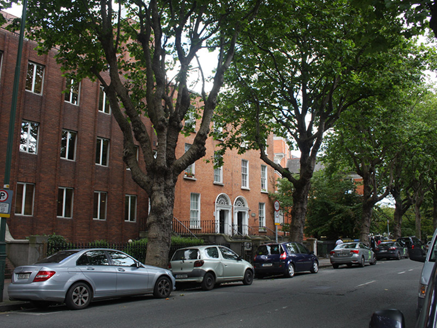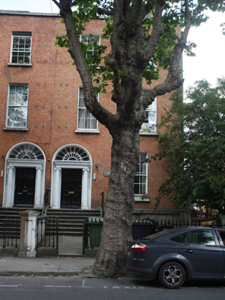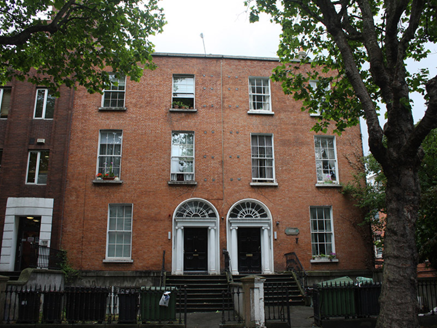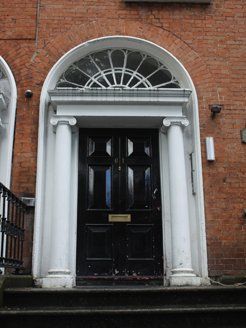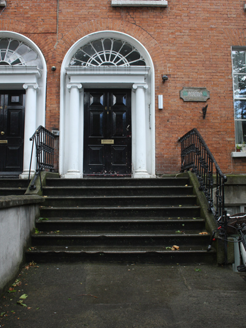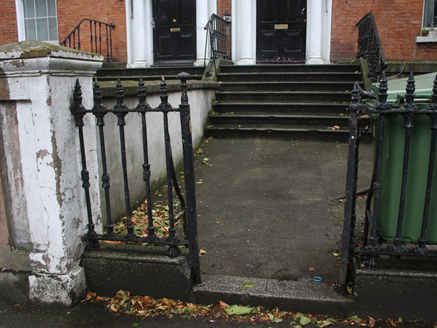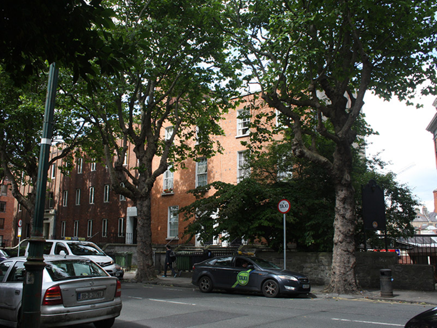Survey Data
Reg No
50110522
Rating
Regional
Categories of Special Interest
Architectural, Artistic
Original Use
House
In Use As
Apartment/flat (converted)
Date
1840 - 1850
Coordinates
316172, 232782
Date Recorded
26/07/2017
Date Updated
--/--/--
Description
Attached two-bay three-storey former house over basement, built c. 1845, having raised rear (north) pile, return to rear. Part of pair, adjoining recent hospital to east. Now in use as apartments. M-profile pitched slate roof, concealed behind parapet with cut granite coping to front (south) elevation, rendered chimneystack having clay pots. Cast-iron rainwater goods. Red brick, laid in Flemish bond, to wall to front, cut granite plinth course over rendered wall to basement, rendered wall to east and to raised attic. Square-headed window openings with granite sills, rendered reveals, and six-over-six pane timber sliding sash windows, recent windows to basement and east elevation. Segmental-headed door having moulded render surround. Timber and stucco doorcase comprising Ionic columns and entablature, petal fanlight. Timber panelled door. Nosed granite steps, cast-iron railings with wrought-iron handrail on granite plinth walls. Square-headed door opening to basement, recent door. Wrought-iron gate having cast-iron collars and matching railings set on carved granite plinth wall to front. Rendered boundary wall to front, terminating in shared square-plan rendered panelled pier with pyramidal cap. On north side of Adelaide road, adjoining hospital complex.
Appraisal
This elegant house retains much of its historic fabric, which contributes to its character and charm. A well-executed doorcase and decreasing scale of fenestration create a sense of grandeur. It would have served as a respectable house for the middle class, complete with servant's entrance in the basement. This pair of buildings constitute the extant remains of what was a terrace of five. From the turn of the nineteenth century, Dublin expanded into Portobello, as a result of an increased demand for housing. Adelaide Road was developed from the 1830s by the Synge family, heirs to the estate of John Hatch.
